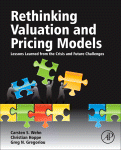

Most ebook files are in PDF format, so you can easily read them using various software such as Foxit Reader or directly on the Google Chrome browser.
Some ebook files are released by publishers in other formats such as .awz, .mobi, .epub, .fb2, etc. You may need to install specific software to read these formats on mobile/PC, such as Calibre.
Please read the tutorial at this link: https://ebookbell.com/faq
We offer FREE conversion to the popular formats you request; however, this may take some time. Therefore, right after payment, please email us, and we will try to provide the service as quickly as possible.
For some exceptional file formats or broken links (if any), please refrain from opening any disputes. Instead, email us first, and we will try to assist within a maximum of 6 hours.
EbookBell Team

4.4
22 reviews''This book shows in a comprehensive way the influences and impacts of past crises. After guiding the reader through several investment styles and asset classes, the editors can present a deep comparison of governmental regulation on the one side and markets' tendencies toward self-regulation on the other. Their analytics identify leading indicators of future crises. A must-read for every financial market participant.''--Christoph D. Kauter, Trigon Equity Partners''In both our personal and professional lives, crises stimulate serious soul searching. The Global Financial Crisis was bound to have this effect on financial risk management. Rethinking Valuation and Pricing Models: Lessons Learned from the Crisis represents a major contribution to the collective soul searching currently under way in the world of quantitative finance. Particular attention is paid to the need for improved treatment of ''higher order risks'' such as basis risk, counterparty default risk, the instability of implied correlations and the shifting credit quality inherent in many interest rate indices. Also addressed is the realization that some risks are different in kind from those reflected in daily fluctuations of prices and rates (essentially the difference between risk and uncertainty in the Frank Knight sense). While not a volume for the quantitatively faint of heart, this book represents a significant contribution to the continuing reassessment of what we know about risk and how to quantify it.''--David M. Rowe,David M. Rowe Risk Advisory